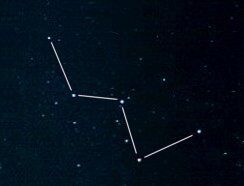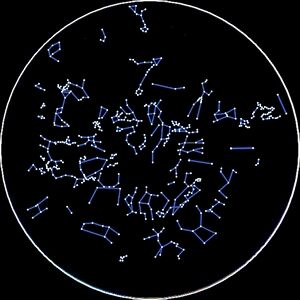Astronomy is the science that studies space: its origin, evolution, composition and the phenomena that take place in it.
Humans have studied space to better understand natural phenomena that seemed elusive to them. Even today, the Universe surrounding the Earth is unknown, as it is only recently that powerful enough instruments have been developed, thus making it possible to see beyond the dimensions of our solar system.
Space is defined as the region starting at approximately 100 km above sea level. Beyond this altitude, the Earth's atmosphere is no longer dense enough for aeroplanes to fly and objects can be placed in orbit around Earth. The phenomena taking place there are known as astronomical phenomena. These include the movement of different stars, the explanation of eclipses, or the formation of galaxies.
The universe surrounding us is constantly expanding. Depending on the study we want to carry out, we can look at it from different dimensions. In ascending order, we can define the dimensions of the universe as follows:

The Solar System is made up of a single star, the Sun, and all the celestial bodies that orbit around it.
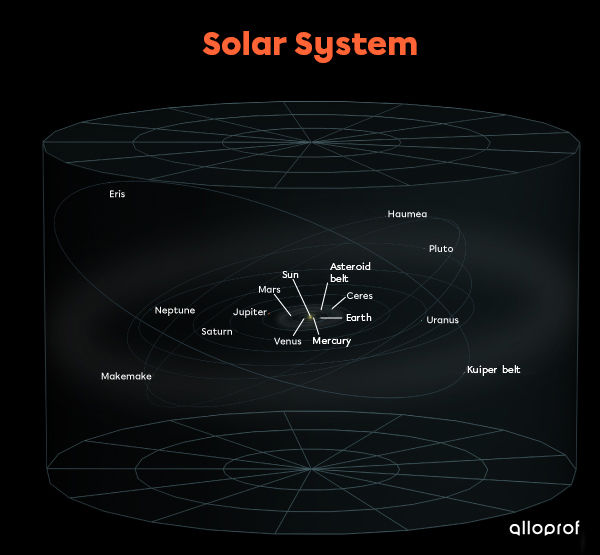
A galaxy is an assembly of stars, gas, and dust sometimes containing a supermassive black hole at its centre.
The stars are grouped together into galaxies. A galaxy like ours, the Milky Way, contains several hundred billion stars. In galaxies, stars can be linked in multiple systems (a few stars) or clusters (several tens to a few hundred thousand stars). The gravitational force is what holds this collection of matter together.
The diameter of the Milky Way is estimated at 100 000 ly, while its mass is estimated between 750 and 1000 billion times the mass of the Sun, which is 2.0 × 1030 kg.
The stars at the centre of the galaxy are the oldest. They are believed to be around 12 billion years old. The stars found within arms are the younger ones. They are estimated to be between 10 and 100 million years old.
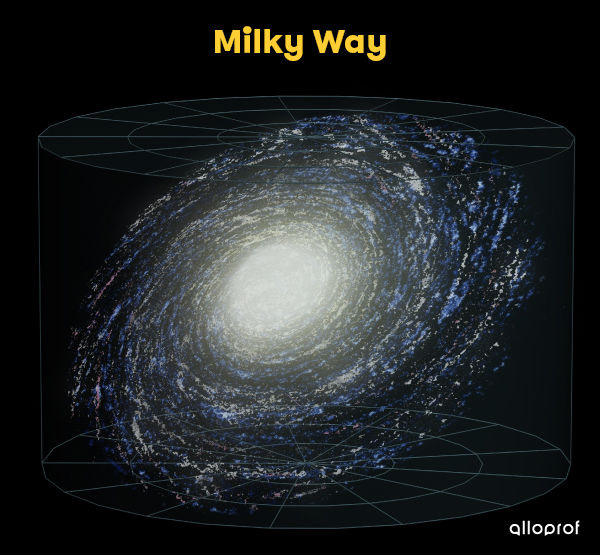
A galaxy cluster is a group of galaxies located in the same area of the universe and linked together by gravitational forces.
The Local Group is a cluster of galaxies of which the Milky Way is part. Small clusters consist of only a few dozen galaxies.
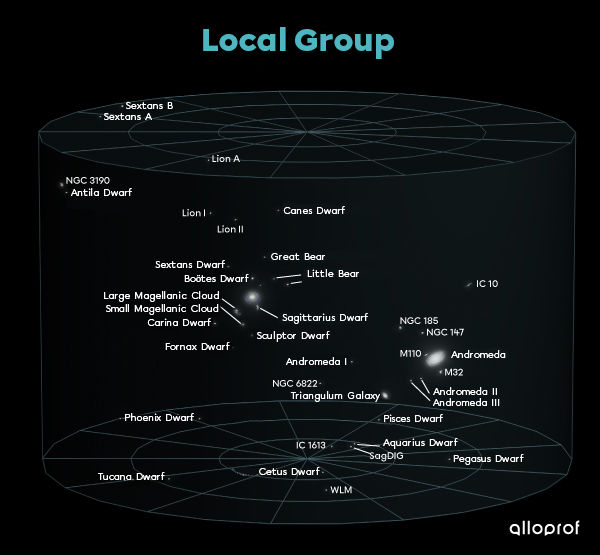
A supercluster is a grouping of galaxy clusters that attract each other by a gravitational force.
A supercluster can contain anywhere between a few hundred to a few thousand galaxy clusters. There are many superclusters in the universe. The Milky Way is located in the Local Supercluster, or Virgo Supercluster.
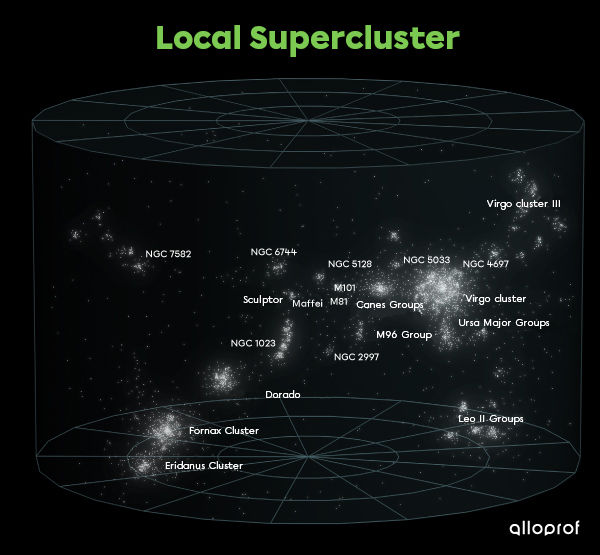
The observable Universe is made up of millions of galaxy superclusters which includes the Local Supercluste.
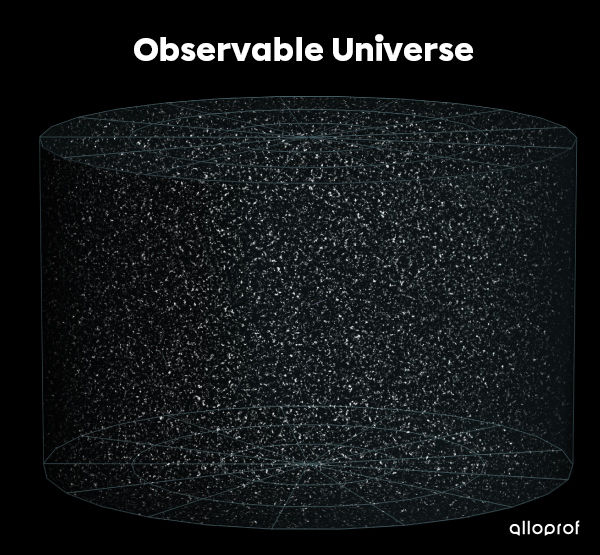
A constellation is an imaginary figure, a drawing formed by the stars.
Usually, the stars that form the constellations are particularly bright and are perceived to be close enough to each other that they can easily be connected by imaginary lines.
The constellations are used quite simply as a visual reference point. The stars of the same constellation are not related to each other, and they are often very far from each other. For example, the stars which form the W of the constellation Cassiopeia (see the image below) appear to be close together, but in fact, they are between 55 and 600 light years apart.
Currently, there are 88 constellations. Of these, 48 were known to the ancient Greeks. The first catalogue was produced by the Greek astronomer Hipparchus. The other 40 constellations were added after the year 1600, and since 1930, every point in the sky now belongs to a constellation.
When observing the sky in Canada, the circumpolar stars can be seen in the north; and in the east, south and west, stars that change according to the season and the time of night can be observed. These stars are said to rise and set. Using a star chart is a good way to start observing the stars and learning to recognize the constellations.
